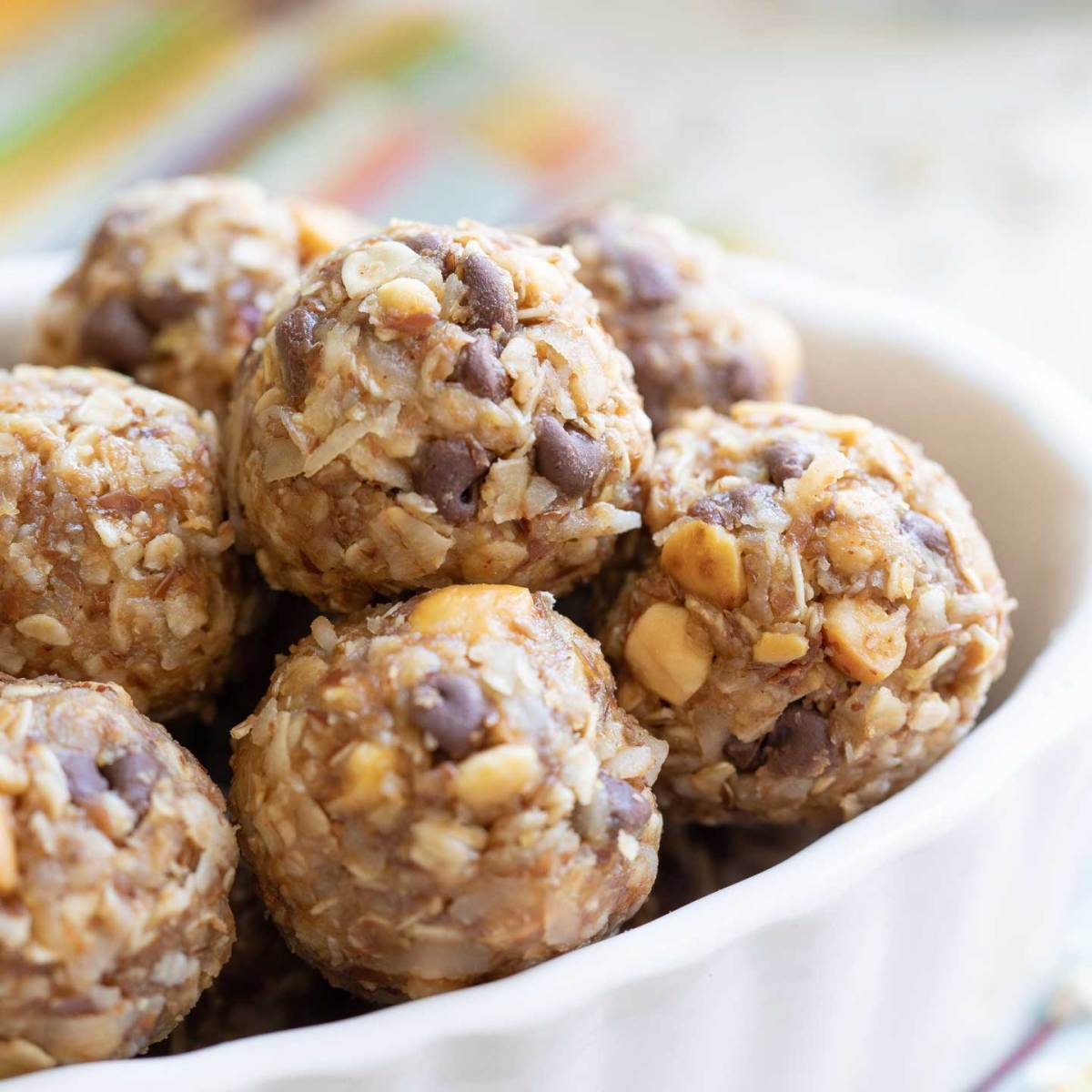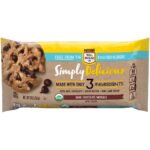Navigating the world of allergen-free snacking can feel like a culinary tightrope walk, but it doesn’t have to be a daunting task. This guide illuminates a path towards delicious and safe snacking, offering practical tips, simple recipes, and creative presentation ideas. Imagine a vibrant spread of colorful, allergen-free treats, each bite a testament to careful planning and delicious innovation. Prepare to transform your snack time from a minefield of potential reactions into a joyful celebration of flavor and well-being.
We’ll delve into the fundamentals of allergen-free cooking, equipping you with the knowledge to confidently prepare snacks at home, avoiding cross-contamination and understanding ingredient labels. From quick and easy recipes perfect for busy weeknights to more elaborate options for parties and gatherings, we’ll explore diverse options catering to various dietary needs, including vegan and ketogenic lifestyles. Get ready to unlock a world of creative snacking possibilities, all while keeping allergies firmly in check.
Allergen-Free Snacking Basics
Navigating the world of allergen-free snacking can feel overwhelming, but with careful planning and preparation, it’s entirely achievable. This section provides essential information to help you create delicious and safe snacks for yourself or others with allergies. Understanding common allergens and their substitutes is the first step towards confident allergen-free snack preparation.
Common Allergens and Substitutes
A comprehensive understanding of common food allergens and suitable substitutes is crucial for creating safe and nutritious allergen-free snacks. The following table provides a helpful overview. Note that individual reactions can vary, and it’s always best to consult with an allergist or healthcare professional for personalized advice.
| Allergen | Substitute | Nutritional Comparison | Recipe Example |
|---|---|---|---|
| Dairy (Milk, Cheese, Whey) | Almond milk, Soy milk, Coconut milk, Rice milk | Nutritional profiles vary; some may be lower in protein or calcium. Check labels for added sugars. | Dairy-free chocolate pudding made with almond milk and arrowroot powder. |
| Eggs | Applesauce, Mashed banana, Flaxseed “egg” (1 tbsp flaxseed meal + 3 tbsp water), Chia seed “egg” | Nutritional differences exist; applesauce and banana add sweetness and moisture. Flax and chia seeds provide fiber and omega-3s. | Vegan muffins using mashed banana as an egg replacement. |
| Peanuts | Sunflower seeds, Pumpkin seeds, Sesame seeds | Varying protein and fat content; sunflower and pumpkin seeds offer vitamin E and magnesium. | Trail mix with sunflower seeds, dried cranberries, and allergen-free chocolate chips. |
| Tree Nuts (Almonds, Walnuts, Cashews, etc.) | Sunflower seeds, Pumpkin seeds, Hemp seeds | Nutritional differences exist, particularly in fat profiles and specific vitamins and minerals. | Nut-free granola bars using sunflower seeds and pumpkin seeds. |
| Soy | Chickpeas, Lentils, Quinoa | Soy is a complete protein; substitutes offer different amino acid profiles and fiber content. | Hummus made with chickpeas instead of soybeans. |
| Wheat | Rice flour, Almond flour, Coconut flour, Quinoa flour | Gluten-free flours offer different textures and nutritional profiles; some are lower in protein. | Gluten-free cookies made with almond flour. |
| Fish | Tofu, Tempeh, Seitan | Protein sources; tofu and tempeh are high in protein and iron; seitan is high in protein. | Vegan fish sticks made from tofu or seitan. |
Safe Preparation of Allergen-Free Snacks
Preventing cross-contamination is paramount when preparing allergen-free snacks at home. Careful attention to these steps is crucial to ensure the safety of those with allergies.
- Designate separate cutting boards, utensils, and cookware specifically for allergen-free foods. Imagine a vibrant red cutting board reserved only for allergen-free ingredients, distinct from other boards used for potentially allergenic items.
- Thoroughly clean all surfaces and equipment before and after preparing allergen-free snacks. Visualize a sparkling clean countertop, meticulously wiped down with a damp cloth and allergen-free cleaner.
- Read ingredient labels meticulously, checking for hidden allergens. Imagine yourself scrutinizing each label, magnifying glass in hand, to identify any unexpected allergens.
- Avoid using shared spice containers or oils that may have come into contact with allergens. Envision clearly separated spice jars, each labeled meticulously, ensuring no cross-contamination.
- Wash your hands thoroughly before and after handling any food, especially if you’ve handled potentially allergenic items. Imagine the feeling of squeaky-clean hands, free from any trace of allergens.
Importance of Reading Food Labels
Reading food labels carefully is not just a suggestion; it’s a critical safety measure when preparing allergen-free snacks. Manufacturers are required to list common allergens, but it’s essential to be vigilant for hidden allergens or cross-contamination warnings. Pay close attention to the ingredient list, paying special attention to phrases like “may contain traces of…” as these indicate a potential risk. A thorough examination of labels is your best defense against accidental exposure to allergens.
Quick & Easy Allergen-Free Snack Recipes

These recipes offer delicious and nutritious allergen-free snacks perfect for busy individuals or families needing quick, healthy options. Each recipe prioritizes minimal ingredients and preparation time, ensuring convenience without compromising taste or nutritional value. The recipes are designed to be easily adaptable to personal preferences and dietary needs.
Simple Apple & Cinnamon Bites
These delightful bites combine the sweetness of apples with the warmth of cinnamon, creating a satisfying and naturally sweet snack. They are naturally gluten-free, dairy-free, and nut-free, making them suitable for a variety of dietary restrictions.
- Ingredients: 1 medium apple (peeled, cored, and diced), 1 tablespoon cinnamon, 1 tablespoon coconut oil (melted).
- Instructions: Toss diced apple with melted coconut oil and cinnamon. Spread evenly on a baking sheet lined with parchment paper. Bake at 350°F (175°C) for 15-20 minutes, or until apples are tender and slightly caramelized. Let cool completely before serving.
Nutritional Benefits: Apples are rich in fiber, promoting digestive health. Cinnamon is known for its anti-inflammatory properties and potential blood sugar regulation benefits. Coconut oil provides healthy fats.
Sweet Potato & Black Bean Salsa
This vibrant salsa offers a colorful and flavorful combination of sweet potatoes and black beans, providing a satisfying and nutritious snack. It is naturally gluten-free, dairy-free, and nut-free.
- Ingredients: 1 medium sweet potato (cooked and diced), 1/2 cup black beans (rinsed and drained), 1/4 cup chopped red onion, 1/4 cup chopped cilantro, 1 tablespoon lime juice.
- Instructions: Combine all ingredients in a bowl. Mix well and serve with plantain chips or baked tortilla chips (ensure they are allergen-free).
Nutritional Benefits: Sweet potatoes are an excellent source of vitamin A and fiber. Black beans are packed with protein and fiber, contributing to satiety and digestive health. The combination provides a good balance of carbohydrates, protein, and fiber.
Cucumber Bites with Avocado Cream
These refreshing cucumber bites provide a light and hydrating snack, perfect for warmer weather. The creamy avocado topping adds healthy fats and a satisfying texture. This recipe is naturally gluten-free, dairy-free, and nut-free.
- Ingredients: 1 cucumber (sliced), 1 ripe avocado (mashed), 1 tablespoon lime juice, salt and pepper to taste.
- Instructions: Mash avocado with lime juice, salt, and pepper. Spread the avocado cream on cucumber slices. Serve immediately.
Nutritional Benefits: Cucumbers are hydrating and provide essential vitamins and minerals. Avocados are rich in healthy monounsaturated fats, fiber, and potassium. This snack offers a refreshing and nutrient-rich experience.
Infographic Design
The infographic will feature a vibrant, colorful layout with three distinct sections, each dedicated to one of the recipes. Each section will include a visually appealing photograph of the finished snack. The background will be a light, natural color, such as a soft green or beige. A bold, easy-to-read font will be used throughout.
Each recipe section will include:
- A clear title for the recipe.
- A list of ingredients presented with colorful icons representing each ingredient.
- A step-by-step guide with simple, numbered instructions and accompanying small, illustrative icons.
- A highlight of the key nutritional benefits of the snack using small, visually appealing icons representing vitamins, minerals, and other beneficial components.
The overall design will be clean, uncluttered, and easy to navigate, ensuring that the information is easily accessible and visually appealing. A consistent color scheme and visual style will be maintained throughout the infographic to ensure a cohesive and professional look. The layout will be designed to be easily printable and shareable on social media.
Resources and Further Exploration of Allergen-Free Snacking
Navigating the world of allergen-free eating can feel like a journey of discovery, but with the right resources and strategies, it becomes significantly easier to enjoy delicious and safe snacks. This section provides valuable tools and tips to enhance your allergen-free snacking experience, whether at home or out and about. It covers reliable online resources, practical advice for dining out, and a step-by-step guide to hosting an inclusive allergen-free potluck.
Reliable Online Resources for Allergen-Free Information
Finding trustworthy information and recipes is crucial for successful allergen-free living. These websites offer a wealth of knowledge and support for individuals managing food allergies.
- Food Allergy Research & Education (FARE): FARE is a leading non-profit organization dedicated to improving the lives of those affected by food allergies. Their website provides extensive information on food allergies, including resources for navigating dining out and social events, as well as recipes and tips for managing allergies at home. Imagine a vibrant website filled with helpful articles, fact sheets, and a supportive community forum, all carefully curated to ensure accuracy and reliability.
- Allergy Eats: This website is a treasure trove of allergen-free recipes, catering to various dietary needs and restrictions. Picture a beautifully designed site with mouthwatering photos of allergy-friendly dishes, organized by allergen and dietary preference, making it easy to find exactly what you need.
- The Gluten-Free Goddess: While focused on gluten-free recipes, many of the recipes on this site are also naturally free from other common allergens like dairy and nuts. Envision a blog with warm, inviting imagery, showcasing recipes that are both delicious and aesthetically pleasing, emphasizing the joy of creating allergen-free meals.
- National Institute of Allergy and Infectious Diseases (NIAID): This government agency provides comprehensive information on various allergies, including food allergies. Think of a highly informative, factual website with detailed explanations of different allergens, their effects, and up-to-date research findings, presented in a clear and accessible manner.
- Your doctor or allergist’s website: Many allergists and medical professionals offer resources on their websites, providing personalized advice and tailored recommendations for managing your specific allergies. This might involve a website that’s more clinically focused, offering practical guides, treatment options, and possibly links to other reputable sources.
Tips for Finding Allergen-Free Options When Eating Out
Dining out or attending social events can be challenging when managing food allergies. However, with careful planning and communication, you can enjoy these occasions without compromising your safety.
- Call ahead: Contact the restaurant or event host in advance to discuss your dietary needs and inquire about allergen-free options. This proactive approach allows the establishment to prepare accordingly, minimizing the risk of cross-contamination.
- Be specific about your allergies: Clearly and concisely communicate your allergies to the staff, including any cross-contamination concerns. For example, instead of saying “I’m allergic to nuts,” you might say “I have a severe nut allergy and cannot have any nuts or cross-contamination from nut products.”
- Check the menu carefully: Scrutinize the menu for potential allergens, looking beyond obvious ingredients. Be aware that some dishes may contain hidden allergens in sauces or seasonings.
- Ask questions: Don’t hesitate to ask the server about preparation methods and ingredients. Inquire about how dishes are prepared, where they are cooked, and what oils or other potential allergens are used.
- Have a backup plan: Always have a safe snack with you, in case allergen-free options are limited or unavailable. This ensures you have something to eat if the restaurant or event doesn’t meet your needs.
Hosting an Allergen-Free Potluck
Organizing an allergen-free potluck requires careful planning and communication to ensure everyone can participate safely and enjoy the gathering.
- Guest Communication: Before the event, send out invitations clearly stating the potluck’s allergen-free nature. Request guests to specify their allergies and what they plan to bring. This allows you to coordinate dishes to ensure a variety of options and avoid potential conflicts.
- Dish Coordination: Create a spreadsheet or online document to track what dishes guests are bringing, ensuring sufficient variety and covering different dietary needs. Clearly label each dish with its ingredients to avoid confusion.
- Preparation and Serving: Designate separate serving utensils for each dish to prevent cross-contamination. Clearly label each dish with its ingredients, including potential allergens that might be present in trace amounts. Consider using color-coded labels or serving platters to further differentiate dishes.
- Safe Serving Practices: Use separate cutting boards and utensils for different dishes, especially those containing common allergens. Thoroughly clean all surfaces and utensils before and after handling potentially allergenic foods. Remind guests to wash their hands before handling food.
- Emergency Plan: Have a plan in place for any potential allergic reactions. This might include having antihistamines readily available and knowing the location of the nearest hospital or emergency services.
Embarking on an allergen-free snacking journey empowers you to take control of your health and enjoy delicious treats without compromise. By understanding common allergens, utilizing smart substitutions, and prioritizing safe food preparation, you can create a snacking experience that’s both flavorful and worry-free. Remember, mindful snacking isn’t just about avoiding allergens; it’s about celebrating the abundance of delicious and healthy options available. So, explore the recipes, embrace the tips, and savor the journey towards a smarter, safer, and more delightful snack time.
Key Questions Answered
What are some common signs of an allergic reaction to a snack?
Common signs include hives, itching, swelling (especially of the face, lips, or tongue), difficulty breathing, and dizziness. Severe reactions can be life-threatening.
Can I use pre-made allergen-free mixes to simplify snack preparation?
Yes, many companies offer pre-made allergen-free mixes for baking and snack preparation. Always carefully check the label to ensure it meets your specific dietary needs.
How can I ensure my children are safe when eating allergen-free snacks at school?
Communicate clearly with the school nurse and teachers about your child’s allergies. Pack clearly labeled snacks and ensure they understand the importance of avoiding cross-contamination.
How long can I store allergen-free snacks safely?
Storage times vary depending on the snack. Check the product label for specific instructions. Generally, proper refrigeration or freezing will extend shelf life.


